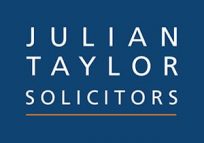From 1 August the clinically extremely vulnerable were no longer required to “shield” and could potentially return to work. This is not a green light to require everyone to return to the workplace, and care should be taken to ensure you are following government guidance, as well as acting sensitively towards the needs of this vulnerable group.
The government’s updated guidance for the clinically extremely vulnerable now states “you can go to work as long as the workplace is Covid-secure, but should carry on working from home wherever possible. You may be able to take up an alternative role or change your working patterns temporarily. If you need support to work at home or in the workplace , you can apply for Access to Work. Access to Work will provide support for the disability-related extra costs of working that are beyond standard reasonable adjustments an employer must provide … As of 1 August you are no longer eligible for Statutory Sick Pay (SSP) on the basis of being advised to shield by the government. Your employer should help you to transition back to work safely and support you to maintain good hand hygiene and distancing practice in your workplace if you are unable to work from home.” https://www.gov.uk/government/publications/guidance-on-shielding-and-protecting-extremely-vulnerable-persons-from-covid-19/guidance-on-shielding-and-protecting-extremely-vulnerable-persons-from-covid-19
The government’s various sector specific guides on working safely during coronavirus have also been updated. Do note that the amendments are not uniform across the board, so we recommend you look at your sector-specific guidance depending upon the nature of your workplace – some of the guides state that those who are clinically vulnerable should be offered the safest available on-site roles if they are unable to work from home. https://www.gov.uk/guidance/working-safely-during-coronavirus-covid-19
Regardless of the government’s advice, employers should take care before requiring a clinically extremely vulnerable employee to come back into the workplace and carry out their own risk assessment. Risk assessments should be undertaken to identify any particular risks taking into account the nature of the workplace, the role, and the nature of their condition. Thought should also be given to whether there are any adjustments or adaptations that would be made to the employee’s role or work area (many former shielders will be disabled within the meaning of the Equality Act 2010). Depending on the circumstances you may need to obtain advice from occupational health or a suitably qualified medical practitioner on whether the individual can return and any adjustments that might facilitate that safely.
Given that many people in this situation may still not feel it is safe to return to work, employers should be prepared to discuss other options such as furlough or unpaid leave. Do contact us if you are concerned about how to handle the potential return to work of any former shielders.
